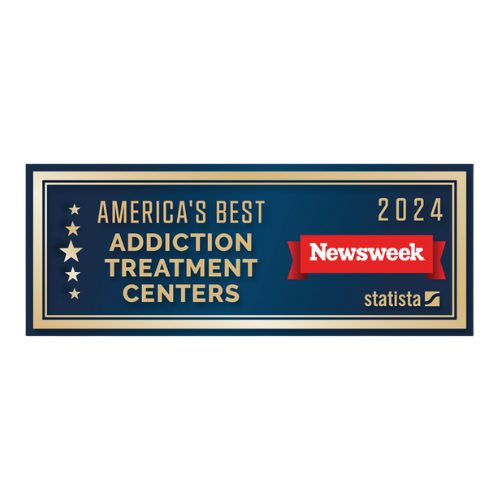Plenty of the staff members at treatment centers in Hawaii are trained to look for co-occurring mental health disorders along with a substance use disorder (SUD). Since SUD tends to be a symptom of a deeper issue, facilities often look for signs of depression, anxiety, and post-traumatic stress disorder (PTSD) when screening patients.
However, sometimes the root cause of a SUD could stem from an eating disorder (ED). At Hawaii Island Recovery, if we discover that a patient has an ED, we will refer patients to a facility that can appropriately treat the disorder. This article will go over the signs of an ED, how it might present itself in a person with SUD, and how to proceed with finding patients appropriate care.
The Criteria for an Eating Disorder
According to the DSM-5, an ED is characterized as a “persistent disturbance of eating or eating-related behavior that results in the altered consumption or absorption of food and that significantly impairs physical health or psychosocial functioning.” EDs, as described in the DSM, cover a large variety of disorders — from anorexia nervosa to binge eating disorder.
Since EDs differ substantially in treatment needs and outcomes, identifying the correct ED is essential. Additionally, there are challenges when screening for an ED in a substance abuse treatment center because many ED symptoms overlap with SUDs, depressive disorders, and personality disorders.
For example, many major depressive disorders might include symptoms of lethargy, weight loss, and a change in eating habits. However, according to the SAMHSA, some signs are unique to EDs that professionals can look for:
#1. Anorexia Nervosa (AN)
- Eating tiny portions
- Dressing in loose, baggy clothing to hide weight loss
- Excessive or compulsive exercise
- Hair loss, sunken eyes, or pale skin
- Complaining of being fat, even if they are underweight
#2. Bulimia Nervosa (BN)
- Eating little in public, but overeating in private
- Disappearing after eating
- Sounding hoarse
- Bruised or callused knuckles, bloodshot eyes, or light bruising under eyes
- Hiding evidence of binge eating
- Severe dental problem (loss of enamel)
#3. Binge Eating Disorder
- Hiding food to eat later
- Eating little in public, but overeating in private
- Hiding evidence of binge eating
#4. Compulsive Overeating
- History of repeated cycles of losing and regaining body weight
- Believing all problems can be solved by weight loss
- Eating little in public, but overeating in private
- Hiding evidence of binge eating

Anxiety disorder can have a major impact on a person’s social life and mental health. Anxiety treatment at Hawaii Island Recovery in Kailua-Kona, HI, is a comfortable and person-centered approach to help patients understand the signs and symptoms of anxiety, overcome the impacts on mental health, and achieve a better quality of life.
More infoThe Connection Between Substance Abuse and Eating Disorders
It’s unclear why many of the primary features of EDs are similar to SUDs. Both disorders include compulsive behavior, loss of control, and continuing that behavior despite the negative consequences. This pattern of behavior might be caused by the same use of reward systems in both disorders, but its psychological relation is still not understood.
Regardless, plenty of research backs up the comorbid relationship between EDs and SUDs. According to the DSM-5, the lifetime prevalence of substance abuse among those with BN is at least 30%. Many with BN use stimulants to attempt to control appetite and weight. Additionally, those with AN might misuse medication in order to achieve weight loss or avoid weight gain.
A review in 2010, conducted by Gadalla and Piran, found that women with either a SUD or an ED were more than four times as likely to develop the other disorder compared to women who had neither disorder. Another study conducted by Piran and Robinson found that as EDs became more severe, the number of different substances used increased. Those attempting to lose weight by purging often misused stimulants and sleeping pills.
Furthermore, those recovering from an ED often used substances to cope with the stress of recovery. Those recovering from a SUD also used disordered eating to cope with the lack of chemical reinforcement from substances.
Treatment Referral for Eating Disorders
While Hawaii Island Recovery does not treat ED, they will help patients find a facility that offers programs that specialize in treating ED. Such treatment options for those with an ED include a combination of medical stabilization, nutritional rehabilitation, pharmacotherapy, and psychosocial treatment. Depending on the severity of their ED, a patient will most likely be recommended medical stabilization and nutritional rehabilitation if they are malnourished or dehydrated. Otherwise, they might be referred to outpatient options.
Pharmacotherapy is recommended for those with BN or BED, as some forms of medication like SSRIs and Trazodone might be effective. Psychosocial treatment like cognitive-behavioral therapy and interpersonal psychotherapy could be helpful for patients who might benefit from finding the source of their ED.
If you’re concerned your patient might have an eating disorder (ED), don’t wait to refer them to treatment. EDs and substance use disorders (SUDs) can work off of each other, causing a dangerous combination that could derail treatment. Relapse is common in both disorders, but recovery is still possible. Awareness of your patient’s mental and physical health history will benefit their treatment plan and ensure a smoother recovery. Hawaii Island Recovery is dedicated to addressing the root cause of a person’s addiction. Often, substance abuse is the symptom of a much larger problem. Our clinical services work as the backbone of our program. Our compassionate staff provides treatment and referrals to care with the understanding that the road to successful recovery is different for each individual. We strive to ensure that our patients always have the best options to care. For more information about helping a client with an ED and SUD, call us today at (866) 390-5070.
Get Help Today!
If you or a loved one need help, call Hawaii Island Recovery toll-free right now.
866-390-5070 Hawaii Island Recovery
Hawaii Island Recovery 










